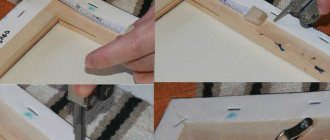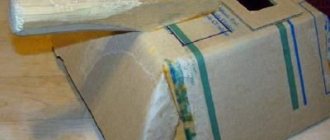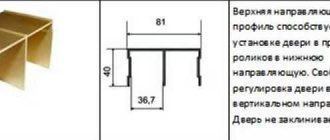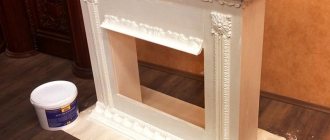Problems that arise when injectors malfunction.
An injector is an element of a diesel engine that supplies fuel to the combustion chamber.
Owners of diesel cars often blame the fuel pump for a malfunction; however, the injector is the final element of the equipment on which the operation of the internal combustion engine depends. Solid deposits may form in the spray part of engines - this is a normal process characteristic of any engine with an injection system. The problem gets worse if the technology for producing and transporting fuel is disrupted. Deposits that form in the channel and injector nozzle disrupt the very shape of the spray pattern, and the fuel throughput is reduced. To troubleshoot the problem, you need to look for a number of signs:
- significant deterioration of the starting system of diesel engines, especially noticeable in the cold season;
- when accelerating, as well as in transient modes, twitching and dips occur;
- engine dynamics and power deteriorate;
- fuel costs increase;
- At idle, the engine runs unevenly.
If such signs are identified and operation continues, certain consequences arise:
- the exhaust gas converter overheats and is damaged;
- high-voltage components fail in the ignition system;
- parts of the cylinder-piston group are damaged.
With such consequences, the car comes for repairs.
Test bench for injector operation diagnostics
Signs of injector contamination
- Difficulty starting the engine.
- Unstable engine operation at idle.
- High fuel consumption.
- Detonation.
- Reduced engine power.
Of course, the appearance of these symptoms does not only occur when the injectors are dirty, so do not rush to change them. First check how they spray fuel or try cleaning them yourself.
According to statistics, the injector operates for at least 120 thousand km of vehicle mileage. And for its smooth operation, it is recommended to wash it at least four times during this time.
The intensity of injector contamination can be divided into three stages:
- Reducing throughput by 5-7%. The increase in fuel consumption is no more than 3 liters per 100 km.
- Reducing throughput by 10-15%. Uneven engine idling, muttering exhaust sound. Noticeable drop in power. Detonation, acrid smell of exhaust gases. Increased fuel consumption by more than 3 liters per 100 km.
- Reducing throughput by 20-50%. The engine runs intermittently, a couple of cylinders may not idle. Shots in the air filter due to a lean mixture. The signs of the first two stages intensify significantly.
Diagram of a stand for washing injectors 3 modes
Anyone can do engine diagnostics using a smartphone.
Essentially, the FORSAGE wash stand control unit performs the simple operation of opening the nozzles during the wash procedure using Wynn's cleaning fluid. Of course, the same can be done with a simple NE555 generator + transistor to control the injector coil. But “FORSAGE” in addition allows you to conduct comparative testing of washed injectors, perform cavitation washing with changing frequencies (helps to “rip off” heavily contaminated injectors) and evaluate the serviceability of the coils without additional. devices. The scheme does not contain anything scarce or very expensive. Quite ordinary, widely available parts.
The electronics of the injector washing stand are mounted on a simple board made of one-sided foil fiberglass or getinax. It is powered by a transformer with an output voltage of 18-22V and a secondary winding current of up to 3A.
Since the device requires a significant current to operate the nozzle, the wires should be thick enough. And do not forget to use a protective fuse in the power circuit - it will be safer.
How to assemble the stand and wash dirty injectors on it can be clearly seen from this video:
Hi all! I propose an effective scheme for an injector cleaning stand, very easy to assemble and inexpensive in terms of finances.
I went to the radio parts store, bought everything I needed, and it cost about 300-350 rubles. Here is the diagram itself.
There are no switches for each injector in the diagram; I added them myself for convenience!
Next we need a soldering iron, straight arms and that’s it...
I think there is nothing more to add, everything is clear here. Good luck everyone!
Video of the stand:
Author; Alexey Tekmaev Chistopol, Republic of Tatarstan
The best way to wash an injector when you have 200 rubles and an empty bottle in your pocket
Hello Dear readers and subscribers!
Today we once again have a self-trick that absolutely anyone can perform, also with minimal investment. To be more precise, I’m talking about cleaning the injector, and specifically about washing the injectors. In this article, we will build our own analogue of an apparatus for washing injectors under pressure using a “handicraft” method, which will not be inferior in functionality to the original.
If you entrust this procedure to a car service, they will charge you at least 1,500 rubles for it.
But, as far as subscribers and regular readers of my channel know, I am not one of those who will go to a car service center if the work can be done myself, and no worse than what they would do for me at a service station. As Freddie Mercury said:
I like to achieve everything myself, and what they gave me is just a consolation prize from defeat.
Let's move on directly to the process itself.
How does a stand for washing injectors work?
DIY common rail injector repair
The washing stand performs two functions: the first is to supply electrical voltage to open the nozzles and the second is to supply liquid under pressure to the nozzles, removing dirt accumulated in the nozzle.
The design of the stand consists of several elements, the main one being a drainless fuel rail. The stand also has a filter mounted at the ramp inlet that prevents dirt or any particles in the liquid from reaching the injectors, a power supply, a pump, and containers for clean and waste liquid.
The housing from a blowtorch is used as a container for the flushing liquid, and a foot pump with a pressure gauge is pumped through a nipple and the pressure in the stand is maintained.
Special liquids for bench washing of injectors cost approximately 400 rubles per liter, and in practice you will have to experiment a little with different degrees of concentration and types of liquids in order to choose the best option for your injectors.
For such a purpose as washing the injectors with your own hands (when you only need to open the injectors and be sure that they will not burn out), three volts is enough. The described design uses a power supply that produces 3V and is connected to a regular 220V network.
With the nominal characteristics of the power supply taken from the tape recorder being 7 volts and 0.7A, in reality, under load the voltage dropped to 3V, this voltage was quite enough for the design to operate. However, if you make a new stand, it is better to use a more powerful power supply.
With a constant supply of direct current, the controlled nozzles are always open and operate at maximum performance, passing a large amount of cleaning liquid.
Do-it-yourself injector cleaning
In order to wash the injectors with your own hands and at home, there are several ways. For example:
- using ultrasonic baths;
- using various solvents;
- at special stands purchased or assembled independently.
Cleaning injectors using ultrasonic baths
I consider this method of cleaning fuel injectors with my own hands to be the highest quality and most stable, primarily because during such cleaning the injector is completely immersed in the working solution. Plus, the only difficulty that arises is getting an ultrasonic bath. The device can either be purchased or rented, for example, in garage cooperatives or small service stations.
In order to prepare a working solution, you will need some kind of alkaline cleaning agent. This could be, for example, Favorite Ultra. The cleaning agent is mixed with distilled water and heated from approximately 40 to 60 degrees. By the way, even medical instruments can be cleaned using this method.
Cleaning injectors using solvents
This method of cleaning injectors with your own hands from carbon deposits and scale is also, most often, considered highly effective. It is carried out using special installations, the operating principle of which is based on the fact that pure solvent is supplied directly through the nozzle, and the spent solvent is passed through special filters that clean it. The entire device is a loop system that operates using a conventional car pump. One of the main advantages of this device is that washing diesel injectors in this way does not require their dismantling. And she assembles it with her own hands right on the spot. To do this, you will need a container with solvent, gasoline filters and a pump. All this is connected by the most ordinary hoses from a dropper and connected to the nozzle that will be washed.
Injector cleaning process
Injector cleaner for gasoline engines
Removing the fuel rail to clean the injectors:
1. Disconnect the negative cable from the battery. 2. Remove the ramp with the fuel pressure regulator. 3. Disconnect the vacuum hose from the regulator. 4. Using two 17mm wrenches, unscrew the fuel pipe fittings, releasing the fuel pressure.
5. Disconnect the electrical connector of the ramp.
6. Using a Phillips screwdriver, unscrew the screw of the bracket securing the fuel pipes... and remove it.
7. Using a 5mm hexagon, unscrew the two ramp mounting screws.
8. By pulling the ramp along the axis of the injectors, remove all four injectors from their seats and remove the ramp towards the left side of the car.
Removing the injectors
1. Squeezing the spring clip, disconnect the electrical connector of the injector.
2. Use a screwdriver to move the injector lock along the ramp... and remove it.
3. While rocking the nozzle, remove it from the ramp.
4. Using a screwdriver with a thin tip, remove the sealing rings... from the nozzle and the nozzle body.
Making a homemade device for cleaning injectors
1) Cut off the metal pressed nut from the rubber brake hose on one side. 2) We put the cut end of the hose onto the nozzle and secure it with a plastic clamp using a tightening strap. 3) At the other end of the hose, insert the tube included in the carburetor cleaner kit (if the kit does not include one, use a tube from WD-40 fluid). The remaining space between the tube and the brake hose can be filled with fum tape, unilock, or the remains of soundproofing material can be used. Then wrap it tightly with electrical tape.
Rice. 1, 2,3. Homemade device for cleaning injectors. 4) Cleaning of injectors occurs when a voltage of 12 V is applied to the injector, and in order not to burn the injector winding, we power a 12 V light bulb in series on the positive wire, in the ground wire we make a break by inserting a switch or alligator clips, or using a working button, only then when you press it. The entire circuit is connected to the battery.
Scheme for switching on the nozzle for cleaning.
Do-it-yourself injector cleaning
1) Create pressure in the brake hose by pressing the spray canister several times. 2) Press the button and apply voltage to the nozzle, the nozzle begins to spray. 3) Don’t forget to press and hold the cleaner nozzle to maintain pressure in the hose. 4) We clean the nozzle until the spray from the nozzle is uniform. After cleaning the injectors, we assemble them back onto the fuel rail, using new sealing rings on all injectors on the rail side. Install new sealing rings very carefully, without using any tools, after lubricating them with engine oil or WD-40 fluid. Install the injectors in the reverse order of removal, securing them to the ramp with clamps, after tightening them a little. Reinstall the fuel rail, connect the fuel line, secure the ground terminal to the battery, turn the ignition key in the lock 3-4 times at intervals of 2-3 seconds to create pressure in the fuel rail, and check the tightness of the connection between the pipeline and the injectors. PS You should also after cleaning the injectors, change the fuel filter, and preferably the fuel pump mesh, and you should only refuel at proven gas stations, and preferably 95 gasoline.
Alexander Borisov, Samara
How to clean the injector yourself
- One meter of gasoline hose;
- Fuel filter, inexpensive;
- Two-liter plastic bottle with cap;
- Electric or manual pump with pressure gauge;
- Two valves from tubeless tires, one with a spool valve, the other without it.
Nozzle (injector) is an element of the internal combustion engine power system designed to inject fuel that forms a combustible mixture with air. In normal mode, the device nozzle sprays gasoline or diesel, forming a fine mist. When the nozzles become dirty, injection occurs in thin streams that do not mix well with the air and the liquid settles on the walls of the intake manifold. This phenomenon leads to a deterioration in the dynamic and operational performance of the motor.
Fluid supply system
The fluid supply system is present in any car; it is a gas tank and a gas pump. Let's borrow this system in a slightly simplified form. For this we will need a fuel pump and a tank. The tank must have an outlet, a return line, a filler hole and an air vent (so as not to create a vacuum in the tank). The tank can be made in different ways:
As you can see, you can do it in different ways. I chose option 3 because it seemed more interesting to me.
To begin with, I found two containers
(in the photo there is a can of Liqui Moly car chemicals and a can of cereal. I’ll digress to say - don’t do such a stupid thing! Don’t take cans of cereal - they are not airtight). And the fuel pump (don’t be surprised by its strange appearance - it’s disabled with the lower part cut off (the normal one was unreasonably expensive, but the seller happily parted with this one for $18).
You will also need copper tubes 9-10 mm in diameter, a pair of nipples from tubeless wheels, a small gas tap, a soldering iron, tin, soldering acid and sandpaper.
We sand the places where the tubes should be, make holes, tin and solder the tubes:
Then we add a second tube connecting the tanks and the return line:
And let's put it together:
All this time you have been tormented by the question: why are nipples needed? Let's clean them from rubber:
And solder one at the base of a small jar (this is for draining liquid):
We'll screw the original cap on it so it doesn't leak.
I thought for a long time about how to secure the fuel pump, and in the end I attached two copper tubes to it with clamps:
I placed the pump in the tank, soldered the tubes from the inside and connected the negative contact of the fuel pump to the housing:
We punch a hole in the top lid of a large can to allow the fuel pump to come out, solder the gas valve onto the return pipe and add spacers for structural rigidity:
Again, remove the cover and solder a nipple on one side (this will be a tube for air) and an insulated connector (for supplying power to the fuel pump):
Accordingly, we connect this terminal with a wire to the positive terminal of the pump (it is advisable to apply sealant under the connector, just in case
Now you can solder the top cover and add the legs:
Those who recognized the legs broke into a smile. For those who did not recognize, these rubber bands are used to secure the heater valves in the E34. This is here so that the vibration of the pump does not shake the entire structure.
Types of diagnostic stands.
Operational testing of diesel engines with a mechanical fuel supply system is carried out using a basic device - the MTA-2 mechanical tester. This is a portable tester that saves not only time, but also money for testing. Using such a tester, you can check the condition of the injector, discharge valves, and injection pump plunger pairs without removing the engine. Thus, the device identifies a faulty injector, then removes it and makes either repairs, pressing, or simple adjustments. If you install the tester on a workbench, you can get a device for testing a stationary type injector.
However, the most basic and expensive device for repairing diesel engines in any workshop is a stand, which is subject to strict requirements. There are many different modifications and manufacturers of this equipment, and such a stand is usually chosen according to the purpose and purpose of the fuel section.
The most common and more reliable installation models include:
A Bosch stand that allows you to check and adjust Common Rail injectors. The number of cars with diesel engines is growing every year. BOSCH is the creator of the most advanced fuel systems for Common Rail diesel engines. They are also the developer of equipment for testing and repairing such a system.
The BOSCH EP stand is considered a quality standard for testing fuel injection pumps, reliability, and manufacturability. The company's installation allows testing of various types of fuel pumps, ranging from traditional to electronically controlled distribution pumps, including the VP 44.
A stand with an installation for diagnosing the fuel rail injection system (CRS 845) allows you to connect a set of common rail injectors to it; this equipment can test up to 6 injectors simultaneously. In addition, if a faulty nozzle is detected, a special device has been developed to repair it.
BOSCH also provides service centers with software, testing data, training for specialists, and maintains a hotline helpline for testing and repairing diesel engines.
- DelphiYDT278 - this kit qualitatively checks the Common Rail system and determines the malfunction of a specific system component. Delphi consists of a digital pressure gauge to check for leaks, and it also includes equipment to help measure injector overflow. Using this equipment, you can identify a faulty injector on a vehicle, as well as make diagnostics on various Common Rail systems.
- The Hartridge Cri-PC is a fast, easy-to-use injector test bench. This setup allows you to quickly check up to 4 injectors. Since the stand is modular, it is possible to select modules based on their intended purpose from the entire range of offers.
- RABOTTI UNITEC is a specialized stand that diagnoses Common Rail injectors. This equipment allows you to accurately test the injectors, as well as check and make their precise adjustment when specifying the required correction code.
Additional recommendations
Having understood the washing technology, you can make sure that it is not so complicated if we are talking only about the technical component. Selecting the necessary materials, preparing tools and creating a special device for the job is quite simple. To do this, you only need to have desire, free time and the skills to use conventional tools that are present in the driver's kit.
Cleaning injectors without removal
But with the choice of a high-quality cleaning agent, things are much more difficult, because this is a responsible task. An incorrectly selected product can damage the injectors and make them unsuitable for further use. Such an error will entail not only temporary, but also additional financial costs. Therefore, it is important not to make mistakes when choosing.
How to attach injectors
Very simple. We just take the original rack from the M50. It will provide us with a working pressure of 3 atmospheres and will allow us to easily attach the injectors (we will also need original plugs, anchors and any scrap metal):
It so happened that I had galvanized iron and a bunch of anchors on hand, and I decided to make a stand out of them:
Just two anchors turned out to be too flimsy, so I decided to add a couple more diagonal ones:
Now we drill holes in the bottom to fix the tank, connect the tank to the rail with hoses:
Everything is ready here too. What are we going to measure with? Conventional cylindrical chemical flasks with a capacity of 100 mg and a plastic stem:
We fix the legs with screws to the bottom:
Mechanically the device is ready:
Flushing frequency and what happens if you violate it
The question of cleaning the injector quite often arises when using fuel with a high sulfur content. And this problem is very typical for domestically produced fuel. Therefore, depending on the specifics of the injection system, the injectors should be washed after 20,000 km. Of course, it is possible later, but this approach is already fraught with the following problems.
How I found my ideal hair growth product
Hello dear! I want to share with you my solution to the sensitive problem of hair loss . The problems are very serious, at least for me. I would never have thought that this misfortune would touch me, especially at the age of 29 (read more...)
Operating principles of Common Rail
To operate reliably, the Common Rail system must maintain extremely high pressure fuel from the pump, through the lines and high pressure line to the injectors.
If there is a decrease in system operating pressure, the vehicle will experience a lack of power which can lead to a complete engine shutdown. Therefore, any loss of pressure must be detected and eliminated as early as possible. The two main reasons for low pressure are a faulty fuel pump or faulty injectors. This device detects both of these faults.
Injector system design
Serves to select the optimal operating mode and the quality of the supplied mixture based on the performance of all sensors of the machine. In addition, the computer detects possible problems in the injector elements themselves.
They provide the computer with all the information about the state of the engine at a particular moment. We are talking about a fuel flow sensor, an air flow sensor, a lambda probe, a knock sensor, and so on.
Modern engines are distinguished by two types of injection. First of all, mono-injection is when one nozzle works on all cylinders, and the prepared fuel mixture has the same characteristics. This type of injection is becoming less and less popular today, as it is ineffective.
In a distributed fuel injection system, unlike the first, a separate injector is installed on each cylinder, and it is responsible for regulating the amount of fuel supplied.
They can be called the “workhorses” of the injection system, because they are responsible for the main work of mixing air and fuel, and supplying it to the combustion chamber.
The injectors, in addition, turn off the supply of the fuel mixture, say, during a descent from a mountain with the gear engaged.
This part of the injector system is specifically subject to the greatest wear, primarily due to microparticles of dirt that can wear out the injector channels and the locking mechanism.
Due to wear, the injector will begin to supply more fuel to the chamber than required. This affects the stability of the engine and power is lost.
Washing without dismantling
Of course, you can wash the injector yourself by simply adding a detergent additive to the fuel tank, but the method described below is more effective.
To wash the injectors with your own hands without removing them from the engine, you need to make a device to supply flushing fluid to them under pressure. For this you will need:
- Fuel filter.
- Two clamps.
- 1.5 m hose. This should be the fuel supply hose for the car. Then it will fit the inner diameter and will not be destroyed by the flushing liquid.
- Two liter plastic bottle.
- Drill diameter 13 mm.
- Car compressor for inflating wheels.
- Two valves for tubeless wheels.
Making the device: Drill Ø 13 mm holes in the bottom and cap of the bottle. Insert nipples for tubeless wheels into them. Unscrew the nipple from the valve in the lid. Then put the hose on it and secure it with a clamp. Connect the fuel filter inlet to the other end of the hose and also secure it with a clamp. The device for washing injectors with your own hands is ready.
To flush the injectors without removing them from the engine, first start the engine and warm it up to operating temperature. After this, you need to reduce the pressure in the fuel line. To do this, disconnect the power or ground from the fuel pump and start the engine. When the pressure in the gas line equals atmospheric pressure, the engine will stop working. Now remove the fuel line hose from the metal tube attached to the body of the car. Insert the fuel filter outlet of the injector cleaner into it and tighten the clamp on the edge of the hose. Remove the cap from the bottle and pour injector cleaner into it. Screw the plug back on and shade it. Place the compressor inflator hose onto the valve in the bottom of the bottle. Hang the bottle on the open hood with the neck down. Turn on the compressor and create a pressure of about 3 kg/cm2 inside the bottle. Now that flushing is supplied to the injectors instead of gasoline, you need to start the engine. It will run on it like it runs on gasoline. To flush the injectors, you need to burn about a liter of flushing fluid. After 15 minutes of idling the engine, you need to turn off the engine and wait 15 minutes to allow the clogs to get as wet as possible. Then start the engine and burn off the liquid.
While washing is in progress, you need to monitor the pressure in the bottle, and when it decreases, turn on the compressor. Above 3 atm. There is no need to increase the pressure in the bottle. When the flushing in the bottle ends and the engine stops, you need to dismantle the flushing system and restore the standard engine power circuit. After this, you should change the oil and oil filter. This must be done because part of the flushing fluid will not burn in the cylinders, so it will be removed from the cylinder walls by oil scraper rings and drain into the sump, diluting the oil. Sometimes, after cleaning the injector with your own hands in this way, the spark plugs fail and have to be replaced.
Washing after dismantling
To do this you will need: two cans of carburetor cleaner, an electric bell button, insulated wires, a 12 V 21 W light bulb (for example, from a turn signal light), an injection syringe and a roll of PVC tape, two terminals suitable for the injector contacts . The syringe must be selected in such a size that the inlet part of your nozzle with the sealing ring fits tightly into it. A syringe with a volume of 2-3 cm3 is often suitable.
Connect the tube from the can to the nozzle of the syringe, and wrap the joint with electrical tape.
- Relieve pressure in the fuel system as described in the previous part (there is no need to warm up the engine).
- Disconnect the fuel supply and return line from the ramp and remove it.
- Disconnect the injectors from the wiring harness and remove them.
- Soak all injector nozzles for an hour in cleaning fluid.
- Remove the plunger from the syringe and insert the nozzle with the o-ring there.
- Connect one contact of the injector directly to the negative terminal of the battery. The other is through a series connection of the button with the light bulb to the positive terminal.
Attach the tube to the can, press its valve and the electric button. Cleaning liquid will come out of the sprayer. Continue flushing until the spray is fine and the pattern is wide. If soaking and rinsing with your own hands does not bring the desired result, then the deposits on the sprayers are too dense and cannot be chemically cleaned with your own hands. Then you need to use an ultrasonic bath for cleaning.
We make a device
The injector cleaning device consists of two parts. The first will supply the cleaning agent. To do this, take the brake hose and cut off the metal threaded end on one side.
The nozzle will be attached to this end of the pipe, since the inner diameter of the hose is perfect for this.
At the other end, where the metal tip remains, we supply liquid.
To do this, take a plastic tube that comes with a can of cleaning agent (if you don’t have such a tube, you can take one from WD-40). We insert this tube into the metal tip.
To ensure a tight seal, you can cut a strip from a wine cork, roll it into a tube and insert it into the tip; it will act as a sealing spacer.
Then insert the tube from the can into this spacer; it should fit tightly. And then wrap it all tightly on top with electrical tape.
You should get a hose with a transition to a plastic tube for connecting a cylinder with cleaning liquid at one end, and a free second for connecting a nozzle.
At this point, the feeding part of the device is ready.
Let's move on to the electrical part.
To do this, you need two wires that will supply power to the nozzle during cleaning. Everything will be powered from the battery.
But in order not to apply increased voltage in the process and not to burn the coil winding of the element, it is necessary to embed an incandescent lamp into the wire that will supply the positive pole.
A toggle switch or button is embedded in the negative pole wire.
This is necessary for the convenience of work, so that you do not have to simultaneously supply the product to the nozzle and at the same time press the wires to the battery so that the nozzle works.
How to clean the injector
There are two ways to clean the injectors of an injection engine:
- By removing the sprayers from the car.
- Using special chemical cleaners that are mixed with fuel.
Of course, the second method is much simpler - just periodically pour additives into the tank, and the injector will be clean. However, this method is only suitable for relatively new cars. For used cars, the cleaner will soften and dissolve long-term layers of dirt in the tank and fuel line - as a result, the nozzles will become even more clogged. In addition, no one is immune from the fact that the chemical compounds used in the purifier will not damage the lambda probe, simultaneously taking the catalyst to the next world.
Therefore, a more reliable (and also effective) method is to remove the fuel nozzles from the engine. Below we will tell you how to clean the injectors yourself. Now we will talk about choosing a liquid for cleaning injectors. You will need a cleaner for cleaning carburetors and injectors, which is sold in aerosol form. Repairers recommend using the following brands of cleaners:
- LIQUI MOLY;
- Carbon Clean4;
- Wynn's;
- LAVR;
- Mannol;
- Runway et al.
Some cleaners (Wynn's, LAVR, etc.) contain aggressive components. For this reason, it is recommended to use protective gloves and goggles during operation.
Why clean injectors at all?
Do-it-yourself injector cleaning
On many sites on the Internet you can find information that there are various miracle additives that can independently clean the fuel system of a car; all you need to do is pour this miracle into your gas tank. How true this is or not is very difficult to judge objectively, because even among the products of world-famous companies that produce lubricants, there are so-called additives for cleaning the fuel system. But. There are several nuances:
- Firstly, it is recommended to use such additives according to the manuals. And they really work, but under one condition: the car is always filled with the highest class fuel, and not domestic jamur.
- Secondly, any use of such liquids is a preventive measure and their efficiency in an already clogged system will be minimal, if not zero.
- Thirdly, in order to effectively clean the fuel supply system to the engine, you need to have an idea of how dirty it is, and to do this you need to disassemble it, remove the injectors and inspect them. After all, the fuel consumption of a car will depend on the degree of their pollution.
In fact, no matter what you write on the Internet about various magical remedies and how they save time because you don’t need to disassemble the fuel system, it is important to understand that washing the injectors is a necessary measure, and even with high-quality fuel, it is recommended to do it every 50 000 kilometers. This will save the car owner from unnecessary excessive consumption of fuel, from the possible occurrence of detonation pops, and in general will extend the shelf life of fuel injectors.
Return measurement equipment.
Identification of defective Common Rail injectors can be achieved by measuring the flow from each injector. The device allows you to measure overflow values directly on the vehicle. The equipment allows you to see the discharge from each of the nozzles in a transparent calibration beaker. These beakers allow you to quickly and easily visually identify a faulty injector.
________________________________________________________
HH701 TESTMASTER 3
Hartridge Testmaster 3 (HH701) Pneumatically controlled, equipped with LCD display and software for analyzing injector performance. Testmaster 3 is compact in size, easy to use, and allows you to store and print test results on an external printer/PC.
HH720 2-STAGEMASTER
2 Stagemaster (HH720) Module for testing double spring injectors. The HH720 is used in conjunction with either the HH700 or the HH701 Testmaster. HH720 displays data on LCD
CRi-PC
One of the best solutions on the equipment market for diagnosing CR injectors.
The CRi-PC test bench is designed as an efficient and flexible platform for testing common rail injectors from all manufacturers and provides workshops with speed and ease of use.
All manufacturers' common rail injector test benches provide the ability to test one or four injectors, and can meet the needs of the workshop using Hartridge kits, both in the case of “bundle testing” and “unit” testing where the type and number of injectors is unpredictable. Checks Bosch, Delphi, Denso and Siemens injectors. Up to 4 injectors are checked at the same time. Modular system of kits - the ability to buy only what you need. Pneumatic clamp. Quick diagnosis of defective injectors. Technical specification Rail pressure control using feedback from the high pressure pump. Injector Control: Generates current, voltage and adjusts pulse width for existing Bosch, Delphi, Denso and Siemens injectors. Injector flow measurement. Measuring the injector coil resistance. Measuring the injector response time. Measuring the magnitude and temperature of the return flow (optional). ______________________________________________________________________________________________________________________________RABOTTI UNITEC
A professional stand for testing CR injectors of all manufacturers from RABOTTI, a well-established company in the European diesel market. The stand is equipped with a high-precision electronic measuring system, which, together with the RAILMASTER software, allows not only to test any piezo and electromagnetic injectors, but also to accurately regulate BOSCH DENSO and DELPHI injectors by optimizing the shape of the control signal and assigning a correction code C2I/C3I (Delphi) to the injector ), IMA(Bosch) ,QR(Denso). Based on the correction codes entered into the engine ECU, the control unit determines the optimal control algorithm for each injector, taking into account its characteristics. Previously, this function was only available at BOSCH and HARTRIDGE dealer stands.
Should I change the oil after flushing?
After flushing the fuel injectors, car owners have questions about the need to change the oil. “Is it necessary to change the oil after adjusting the valve clearances?” - they ask a car service specialist. Drivers have similar questions after replacing the timing belt, camshaft oil seal or replacing spark plugs.
Engine oil is replaced in cases where engine repairs (maintenance) have directly or indirectly affected its composition and changed the characteristics of the lubricant.
The injector cleaning procedure, both chemical and ultrasonic, does not change the composition of the engine oil. As a result, there is no need to change the oil after flushing the fuel system.
In engine maintenance, there is a technique for “decarbonizing” the piston rings, piston crowns, combustion chamber and valve guides with a special liquid. The technique is based on the slow dissolution of solid resinous deposits in a “steam bath” environment. To create such an environment, by rotating the crankshaft, the pistons are installed in one row on the middle line of the cylinders in height, and by turning out the spark plugs, liquid is poured into the cylinders in equal parts. The engine must be at maximum operating temperature. After filling the liquid, the spark plugs are wrapped and the “steam bath” process begins, which continues until the engine temperature drops to 15-20 degrees. The engine starts again and warms up to operating temperature at idle speed. Do I need to change the oil in this case?
Using the “steam bath” engine decoking technique changes the composition of the engine oil, since the waste liquid with dissolved resin fractions flows into the engine crankcase and, accordingly, requires its replacement.
The question arises: is it necessary to use the above method of steam treatment of resins when chemically washing injectors? Chemical cleaning of injectors with a solvent allows you to clean not only the injectors. Since the procedure is performed with the engine running and at different speeds, there is no urgent need for additional decarbonization and oil changes.











